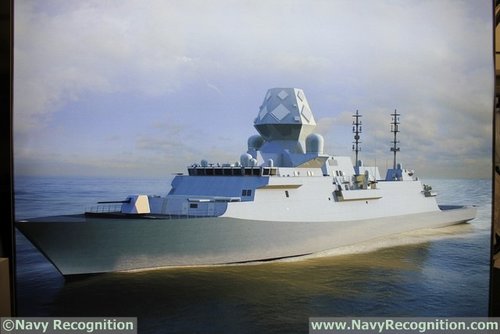Your first para has no relevance to your former claims. Indeed you now seem to be shifting to actually agree T26 is a capable design based around ASW.
Plans change, the barebones 3rd variant was never T26 but “C3” and the River2s have eventually occupied that slot (for better or worse).
T26 fills exactly the ASW/GP slot it was intended to, there is no reason why a GP T26 could not be built - except that what people want is a GP/ASW ship and not some oversilenced FFBNW thing. The latter evolved to T31 because of a concern T26 was costly due to the ASW role requirements and FFBNW would never be actioned (which it wouldn’t). It was also hoped to promote exports as the T26 was felt to be too capable and expensive to appeal overseas. That was the mistake and T31 is in my view merely a costly attempt at “anyone but BAE”, but which will bring a seperate strand of parts, weapons and training yet again. They’ll be the first to go.
No British warship has won a Canadian or Australian order since the 1960s, nearly 60 years ago. The 60 years prior to that they were practically 100% British. That should tell you something about how far we diverged and the idea any British design should automatically achieve their sales is patently absurd and that it has is a major sign the RN is getting its designs right after a long time of not.
My apologies if I was not being clear enough about the original design, with two variants, being firmly in the past tense. The revised design does not have separate variants. Despite it being noticeably larger than the original design it also does not have a mission bay, which was supposed to be key to undertaking & supporting littoral operations. Incidentally, the revised design's ASW capability is worse than that of the old design GP variant. Even with much reduced capabilities overall, costs have skyrocketed on the program, to the point where the Royal Navy will be hard pressed to buy a mere three examples (compared to the old design's eleven frigates in two variants). Not to mention that a very short while ago the RN / MOD were seriously considering cancelling the program altogether; only the argument that more shipyards would be lost (with resulting politically toxic direct and indirect job losses) ultimately stayed their hand. With the ongoing fallout from the current crisis (including rapidly worsening programs costs if that was possible) that stay of execution may be reviewed in the very near future.
I should note in passing that the C3 (the so called 'Global Corvette', part of S2C2) concept predated the Type 26 program and was defunct by early 2010. The River class was strictly a political procurement solely designed to avoid (further) heavy contract penalties from a very poorly executed procurement program and to keep certain shipyards & their associated support infrastructure in business.
The Type 31e program is not a luxury; in light of the utter and total failure that the Type 26 program has become it is a
vital necessity. And even that won't be able to really fill the gap left by the Type 26's crash & burn.
With regards as to the 1960s and 1970s, British shipyards and/or naval architects did actually 'win' a fair few orders from Canada and Australia during this period, ranging from letters of intent to signed contracts. Unfortunately just about all of them ultimately ended up being cancelled for economic and/or political reasons.
Don't think the Navantia F100/Hobart was a serious contender for the Australian Hunter contract whose primary mission was ASW as it did not have the expensive silenced HED propulsion system with the shaft mounted electric motors (no noisy gearboxes in HED mode) as did both FREMM and T26
Navanatia none the less believed, with a fair bit of justification, that they had the lock on the contract, F110 developmental delays notwithstanding. The F110 is actually a scaled down development of the
Hobart design, Navanatia believing that it would save on time and development costs. Alas for them that proved somewhat wide of the mark. Eventually the damage to the company's reputation from various mishaps involving their hybrid designs worldwide (not to mention the continuing legal & political fallout) proved to be the deciding factor. The FREMM-IT proposal on the other hand in fell prey in part to it's own political woes, despite being arguably what the RAN actually needed.
With regards as to the
Hunter design, only time will tell if the new radar and other systems can be indeed successfully integrated into a Type 26 based hull.

 ukdefencejournal.org.uk
ukdefencejournal.org.uk

